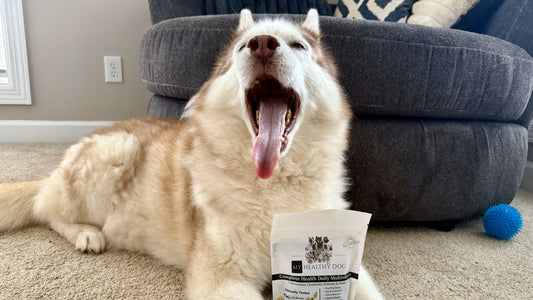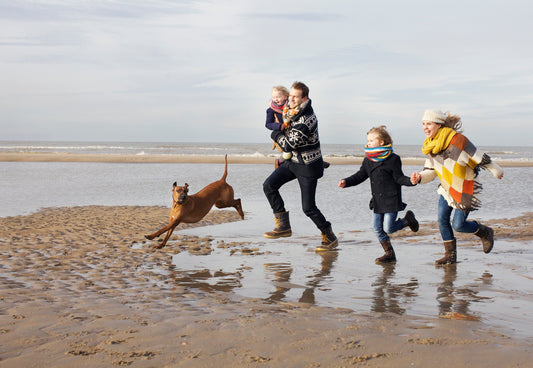The Saint Bernard is a breed known for its impressive size, gentle nature, and remarkable history of rescue work. This article delves into the origins, distinctive appearance, and engaging temperament of the Saint Bernard, along with essential care tips to ensure they lead healthy, fulfilling lives.
Breed Summary
Origin and History
The Saint Bernard originated in the Swiss Alps and the Italian Alps, where they were developed by monks at the Saint Bernard Hospice during the 17th century. These dogs were bred for their ability to navigate treacherous mountain terrain and their exceptional rescue skills. Saint Bernards are renowned for their work as rescue dogs, saving countless lives by finding and aiding travelers lost in the snow. Recognized by the American Kennel Club (AKC) and the Fédération Cynologique Internationale (FCI), the Saint Bernard remains a beloved and iconic breed.
Appearance
The Saint Bernard is a large and powerful dog with a strong, muscular build. They typically stand between 26 to 30 inches tall at the shoulder and weigh between 120 to 180 pounds. Their coat can be short-haired or long-haired, and comes in various shades of white with red, orange, or brindle markings. They have a broad head with a short muzzle, expressive dark eyes, and medium-sized ears that hang close to the head. The tail is long and bushy, adding to their majestic appearance.
Temperament
Saint Bernards are known for their gentle, friendly, and patient nature. They form strong bonds with their family members and are excellent with children, often earning the nickname "nanny dog." Their intelligence and eagerness to please make them relatively easy to train, although they can be a bit stubborn at times. Saint Bernards are also known for their calm and composed demeanor, making them wonderful companions. They require regular physical and mental stimulation to prevent boredom and destructive behavior.
Health Outlook
The lifespan of a Saint Bernard ranges from 8 to 10 years. They are generally healthy dogs but can be prone to certain conditions, such as hip dysplasia, elbow dysplasia, and heart problems. Regular grooming is essential to maintain their coat and skin health. Dry, itchy skin can be a concern, making the use of premium dog shampoos designed to moisturize and soothe sensitive skin beneficial. These shampoos help maintain the skin's natural oils, provide relief from itching, and promote overall skin health.
Nutritional Requirements
A balanced diet is crucial for maintaining the health and vitality of a Saint Bernard. High-quality dog food rich in protein and low in fillers is recommended to support their large size and active lifestyle. Including a complete multivitamin can ensure they receive all necessary nutrients, promoting strong bones, a healthy coat, and overall well-being. Supplements that support joint health and digestive health can also be beneficial for this breed.
Exercise Requirement
Saint Bernards are moderately active dogs that require regular exercise to stay healthy and happy. Daily walks, play sessions, and activities that engage their natural curiosity and social nature, such as obedience training and gentle play, are ideal. Providing mental stimulation through puzzle toys and training exercises is also important to prevent boredom and destructive behavior.
Pros and Cons of Owning the Breed
Pros:
- Gentle and affectionate, forming strong bonds with family members.
- Excellent with children, often serving as a protective and patient companion.
- Intelligent and trainable, excelling in obedience and rescue work.
Cons:
- Large size requires ample space and regular exercise.
- Prone to certain health issues, requiring regular veterinary care.
- High grooming needs due to their dense coat.
Space Requirements
Saint Bernards adapt well to various living situations, but they thrive best in homes with access to a yard where they can roam and play. They can adapt to apartment living if provided with sufficient exercise and mental stimulation.
Suitability for Elderly
Saint Bernards can be suitable companions for elderly individuals who are active and able to meet the breed's exercise and grooming needs. Their calm and gentle nature makes them excellent companions, but potential owners should be prepared for their size and care requirements.
Suitability for Kids
Saint Bernards are generally good with children due to their gentle and patient nature. They enjoy engaging in activities with kids and can be wonderful playmates. Supervision is recommended, especially with younger children, to ensure safe interactions due to the dog's large size.
Cost
The cost of a Saint Bernard puppy can range from $1,500 to $3,000, depending on the breeder's reputation and the pup's lineage. Ongoing costs include high-quality food, regular veterinary care, grooming products, and potential healthcare expenses.
What Should the Owner Be Like?
Owners of Saint Bernards should be patient, loving, and committed to providing regular exercise and grooming. They should have an understanding of the breed's unique healthcare needs and be prepared to invest time in training and socialization. A loving and attentive owner will ensure this gentle and loyal breed thrives.
Fun Facts
- Saint Bernards are famous for their rescue work in the Swiss Alps, often depicted with a small barrel of brandy around their neck to revive stranded travelers.
- The breed's name comes from the Great Saint Bernard Pass, where they were used for rescue missions by monks.
Conclusion
The Saint Bernard is a remarkable breed that combines strength, intelligence, and a gentle nature. While they come with specific care requirements, the joy and companionship they provide make them a cherished member of any family. For those who appreciate a blend of protection and affection, the Saint Bernard is an excellent choice.
Are you familiar with the Saint Bernard or have this wonderful breed in your family?
Share your stories in the comments!
Share the Article with friends!





